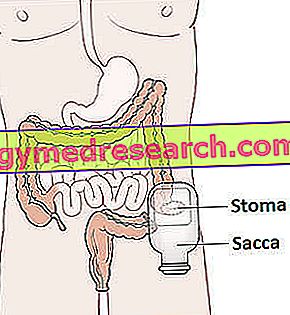Definition
Dental extraction (or avulsion) is a surgical procedure that involves removing a tooth from the alveolus, the natural mandibular / maxillary bone cavity in which it resides.

When and why it is necessary
With the exception of the third molars, the teeth should be extracted in the following circumstances:
- Teeth severely infected with deep CARIES, PULPITS or DENTAL OBJECTS and not treatable by other conservative methods: extraction proves to be the only (and extreme) solution conceivable to prevent the spread of infection in the other neighboring teeth or in the bony / gingival structures contiguous.
- Teeth affected by GRANULOMA or DENTAL CYST not curable by apicectomy: dental extraction is the only possible alternative to prevent the risk of expansion of the infection to the carrier bone or, even worse, to the blood (septicemia).
- DANGEROUSLY SLIPED TEETHS that cannot be recovered through orthodontic procedures.
- ADVANCED PIORREA: in similar circumstances, the avulsion of one or more teeth may be necessary to prevent a possible worsening of periodontal disease or the spontaneous loss of a permanent tooth.
- DENTAL BREAKDOWN not remediable by orthodontic methods (dental apparatus).
- DENTAL TEETH: more than 32 teeth appear in the permanent dentition. This condition requires the extraction of superfluous teeth as a reason for dental malocclusion and crooked teeth.
- DENTAL INCLUSION: the tooth is totally or partially trapped in the gingiva and, by not completing its growth path, creates pain or alters the harmonious alignment of the teeth. Dental inclusion often requires the extraction of the imperfect tooth, followed by the autotransplantation of the same tooth in the correct position.
- FAILURE OF MILK TEETH FALL within the established physiological time: when it is late in falling, a milk tooth can hinder the correct development of the corresponding permanent teeth, laying the basis for a dental malocclusion or for dental inclusion.
- CHEMIO-RADIOTHERAPIES that require the extraction of a tooth.

Simple and surgical extraction
A tooth can be extracted in two different ways:
- Simple extraction (most common avulsion intervention): it is performed on a clearly visible and totally erupted tooth through the gum. The dentist, after carefully anesthetized the sick / problematic tooth, simply extracts the tooth with appropriate instruments (elevator and forceps), exerting more or less pressure on it.
- Surgical extraction: more complex avulsion operation, performed on teeth included or not easily accessible (they are still partially or completely covered by the gum). The surgical extraction of the tooth requires a careful and precise preliminary incision on the gingiva, indispensable for creating an entrance from which access to the tooth is easier. It is not uncommon for a particularly difficult to remove dental element to require the removal of some bone fragments circumscribed to it. In these cases, the problematic tooth can be divided into several sections to facilitate its avulsion. The operation can be performed under local anesthesia (in the dental office) or general (in the hospital setting).
Dental extraction and pain
Thanks to the improvement of anesthetic techniques, today dental extraction is not particularly painful. Practicing surgery under local anesthesia, the tooth is put to sleep; therefore, an experienced dentist must be able to perform the operation without the patient perceiving pain or pinching. A feeling of pressure or traction of the tooth is instead normal during this type of intervention.
In case of unbearable pain or discomfort during tooth extraction, it is strongly recommended to report it to the dentist.
Prepare for surgery
Before proceeding with the extraction of a problematic tooth, the dentist will have to carry out all the necessary investigations, such as radiographs of the "suspect" tooth or, if necessary, the overview (radiography of both dental arches). After motivating the extraction, the doctor must carefully educate the patient on all possible precautions to be taken to prevent post-surgery complications. In fact, the patient must be made aware of all the risks and complications that could occur after the extraction of a tooth.
Before proceeding with the intervention, it is necessary - and indispensable - to always address to the dentist all doubts, concerns and uncertainties. It is recommended to always inform the doctor in the presence of allergies to drugs or materials (eg latex allergy, nickel allergy), illnesses (previous or in progress) and any interesting state (presumed or ongoing pregnancy). Furthermore, it is equally important to report to the dentist if you are taking medication for a given disease.
Prevention of complications
Oral infections - especially alveolitis, cysts, granuloma and dental abscess - are the most common complications after a dental extraction operation.
To prevent them, it is necessary to proceed in two steps:
- Careful cleaning of the home oral cavity, supported by rinses of medicated-disinfectant mouthwashes (formulated for example with chlorhexidine) in the 4 days prior to tooth extraction.
- Prophylactic antibiotic treatment to be followed before tooth extraction to minimize the risk of infection. It should be pointed out, however, that antibiotic therapy is not always prescribed before surgery. In general, dentists recommend taking these drugs as a precaution in case of weakening of the immune system, predisposition to infections, ongoing dental infection or particularly complex dental extraction.
After tooth extraction »



